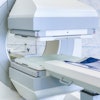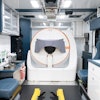
NEW YORK (Reuters Health), Jul 16 - Although capsule endoscopy (PillCam COLON Capsule; Given Imaging) provides visualization of the colonic mucosa, it is not as sensitive as standard colonoscopy for detecting polyps and cancer, European researchers report.
The advantages of capsule endoscopy over colonoscopy include no need for sedation or insufflation, according to the report in the New England Journal of Medicine for July 16. The feasibility and safety of capsule endoscopy has been established, but exactly how capsule endoscopy stacks up against colonoscopy in detecting colon lesions was unclear.
Dr. Andre Van Gossum, from Erasme University Hospital, Brussels, Belgium, and co-researchers compared the performance of capsule endoscopy and standard colonoscopy in a multicenter study of 328 patients with known or suspected colon lesions. Capsule endoscopy was performed first and then after capsule excretion or at least 10 hours later, whichever came first, standard colonoscopy was performed.
In 92.8% of patients, the capsule was excreted within 10 hours of ingestion and prior to the end of battery life, the authors report.
For detecting polyps at least 6 mm in size, capsule endoscopy achieved a sensitivity of 64% and a specificity of 84%. For detecting advanced adenomas, the corresponding values were 73% and 79%.
Capsule endoscopy detected 14 cancers, while standard colonoscopy detected these malignancies plus five additional cancers. The sensitivity of capsule endoscopy was directly related to the cleanliness of the colon.
Roughly 8% of patients experienced an adverse event, which was most often related to colon preparation, the report indicates.
In a related editorial, Dr. Michael Bretthauer, Oslo University Hospital Rikshospitalet, Norway, discusses the main goal of colorectal cancer screening.
"Detection rates for polyps and cancer, as investigated in the present study, are only surrogate markers for the ultimate primary end point -- the ability of screening methods to reduce the incidence of the disease and the associated mortality rate," he writes. "This is the crux of the matter in any approach to cancer screening."
Future studies, he adds, comparing colonoscopy, capsule endoscopy, and CT colonography should examine these end points instead.
N Engl J Med 2009;361:264-270,300-301.
Last Updated: 2009-07-15 17:00:17 -0400 (Reuters Health)
Related Reading
Autofluorescence videoendoscopy improves colon polyp discovery, September 15, 2008
Copyright © 2009 Reuters Limited. All rights reserved. Republication or redistribution of Reuters content, including by framing or similar means, is expressly prohibited without the prior written consent of Reuters. Reuters shall not be liable for any errors or delays in the content, or for any actions taken in reliance thereon. Reuters and the Reuters sphere logo are registered trademarks and trademarks of the Reuters group of companies around the world.

















